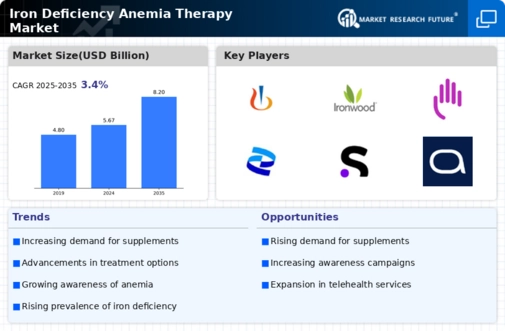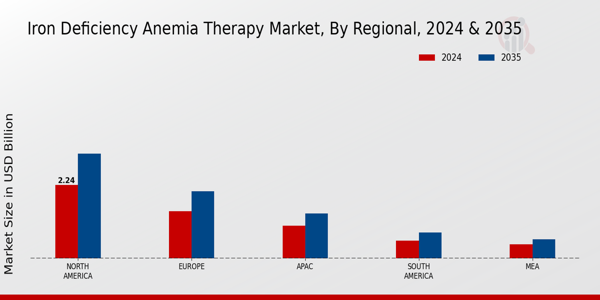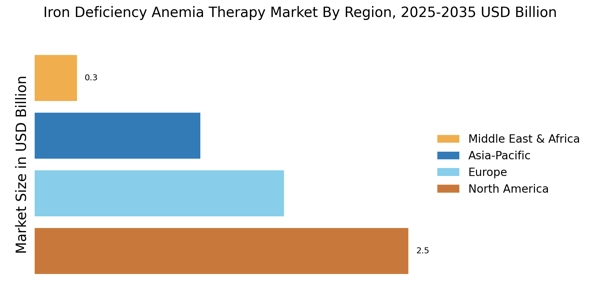Rising Healthcare Expenditure
The upward trend in healthcare spending is another significant driver for the Iron Deficiency Anemia Therapy Market. As countries allocate more resources to healthcare, there is a corresponding increase in the availability of treatments for various conditions, including iron deficiency anemia. This rise in expenditure facilitates better access to iron supplements and advanced therapies, particularly in developing regions where anemia prevalence is high. Moreover, increased funding for research and development in the field of hematology is likely to yield new therapeutic options, further stimulating market growth. The correlation between healthcare investment and treatment accessibility suggests a promising outlook for the industry.
Increased Awareness and Education
There is a growing emphasis on public health education regarding iron deficiency anemia, which serves as a crucial driver for the Iron Deficiency Anemia Therapy Market. Health campaigns aimed at raising awareness about the symptoms and risks associated with anemia are becoming more prevalent. This increased awareness is likely to lead to earlier diagnosis and treatment, thereby expanding the patient base for iron deficiency therapies. Furthermore, healthcare professionals are being trained to recognize and manage anemia more effectively, which could result in a higher rate of therapy initiation. Consequently, this trend may contribute to a more robust market environment for iron deficiency anemia therapies.
Rising Prevalence of Iron Deficiency Anemia
The increasing incidence of iron deficiency anemia is a primary driver for the Iron Deficiency Anemia Therapy Market. According to health statistics, approximately 1.62 billion people are affected by anemia, with iron deficiency being the most common cause. This condition is particularly prevalent among women of childbearing age and children, leading to a heightened demand for effective therapies. As awareness of the health implications associated with anemia grows, healthcare providers are more likely to recommend iron supplementation and other therapeutic options. This trend suggests a robust market potential for innovative treatments and therapies aimed at addressing iron deficiency anemia, thereby propelling the industry forward.
Technological Advancements in Treatment Options
Technological innovations in the Iron Deficiency Anemia Therapy Market are transforming treatment methodologies. Recent advancements in drug formulations, such as the development of more bioavailable iron supplements and intravenous iron therapies, have improved patient outcomes. These innovations not only enhance the efficacy of treatments but also reduce side effects commonly associated with traditional iron supplements. The introduction of novel delivery systems, such as sustained-release formulations, is likely to increase patient adherence to therapy. As a result, the market is witnessing a surge in demand for these advanced treatment options, which could significantly impact the overall growth trajectory of the industry.
Growing Demand for Preventive Healthcare Solutions
The shift towards preventive healthcare is influencing the Iron Deficiency Anemia Therapy Market significantly. As populations become more health-conscious, there is a rising demand for preventive measures, including nutritional supplements that address iron deficiency before it leads to anemia. This trend is particularly evident in regions with high rates of malnutrition, where proactive health strategies are being implemented. The focus on prevention is likely to drive the market for iron supplements and related therapies, as consumers seek to maintain optimal health. This proactive approach to health management may create new opportunities for growth within the iron deficiency anemia therapy sector.



















Leave a Comment